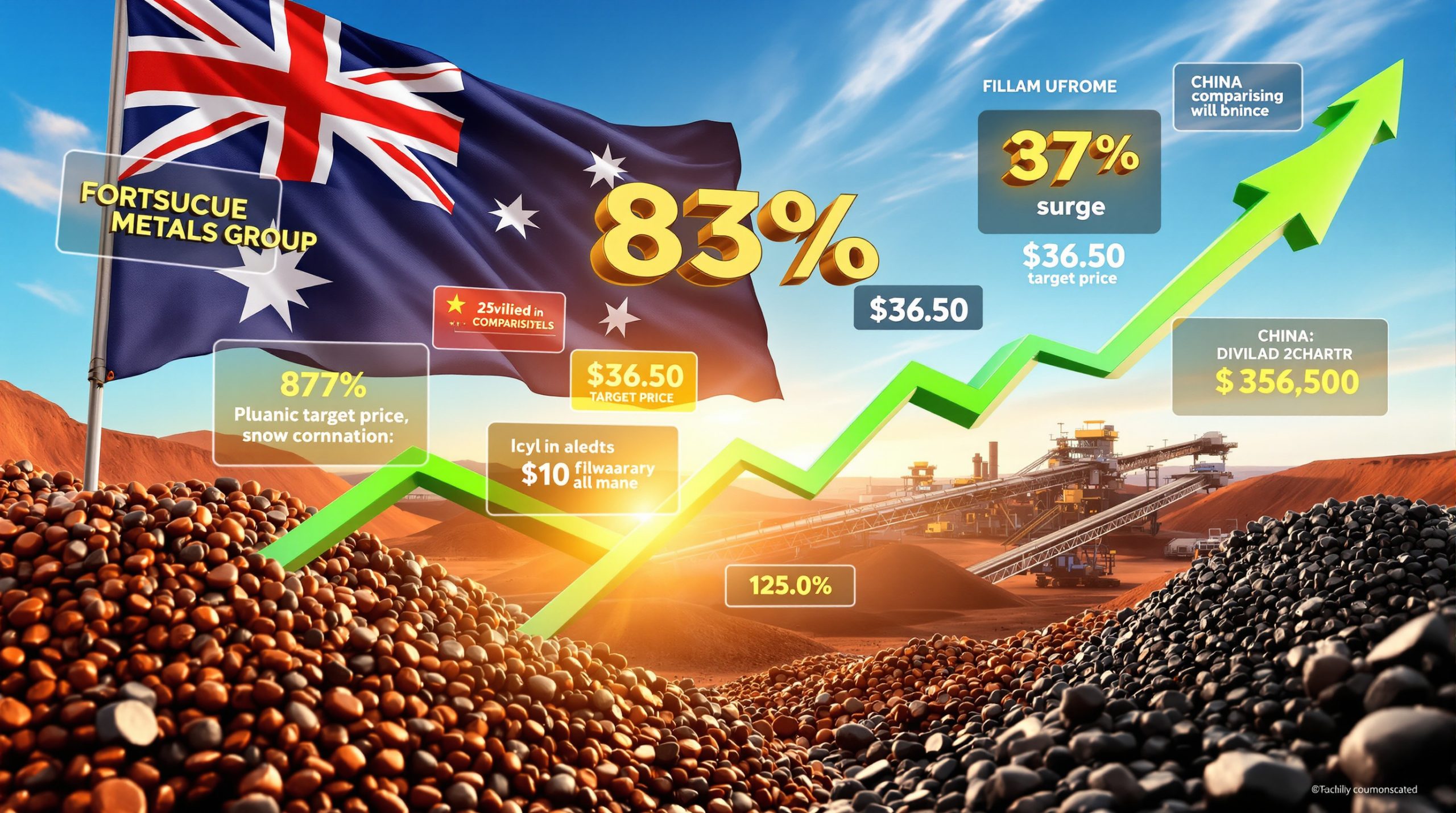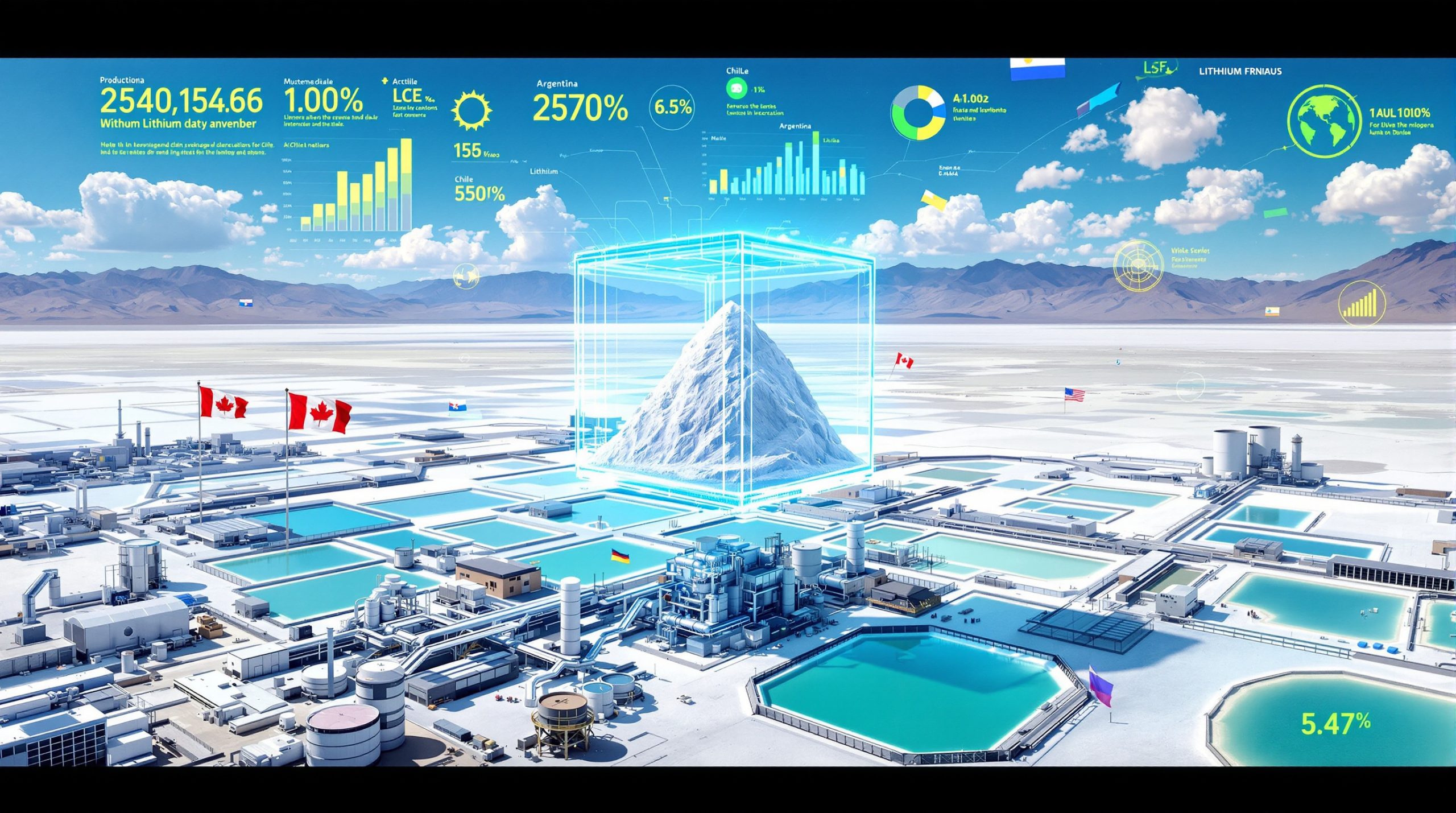The US Defense Deal with MP Materials: A Strategic Shift in Critical Minerals Policy
The recent landmark agreement between MP Materials and the US Department of Defense (DoD) represents a watershed moment in America's approach to securing critical mineral supply chains. This comprehensive public-private partnership aims to establish domestic rare earth magnet production capacity and reduce dependence on foreign suppliers—particularly China, which currently dominates global rare earth processing.
Key Elements of the MP Materials-DoD Partnership
The deal combines significant private and public financing with long-term commitments to create a sustainable domestic rare earth supply chain. Core components include:
- $1 billion financing from JPMorgan Chase and Goldman Sachs for a second US magnet facility (the "10X Facility") scheduled for commissioning in 2028
- $150 million Department of Defense loan specifically for expanding heavy rare earth separation capabilities at the Mountain Pass mine in California
- $400 million DoD equity investment through preferred stock and warrants, potentially making the Defense Department MP Materials' largest shareholder
- 10-year price floor guarantee of $110 per kilogram for neodymium-praseodymium (NdPr) products
- 100% purchase commitment covering all magnets from the new facility for the next decade, for both defense and commercial applications
This comprehensive structure reflects a decisive shift in US industrial policy, with the government taking a direct financial stake in securing access to strategically vital materials.
"This partnership demonstrates an unprecedented level of government commitment to domestic rare earth production, creating a template that could reshape America's approach to critical mineral security," notes a SmallCaps analysis from July 2025.
Strategic Significance for US Industrial Policy
The MP Materials deal signals a fundamental paradigm shift in how the United States approaches resource security. Rather than relying primarily on market forces, the government is now actively participating as an investor, customer, and price guarantor.
This approach creates several strategic advantages:
- Reduces geopolitical vulnerability by decreasing dependence on potentially hostile nations
- Stabilizes long-term supply through price floors and purchase commitments
- Accelerates capital investment by reducing financial risk for private investors
- Creates a replicable model for other critical mineral projects
The deal also establishes a precedent for future public-private partnerships, demonstrating the government's willingness to deploy substantial capital to secure strategic resources.
Why Are Critical Minerals Central to National Security?
The Pentagon's unprecedented investment in MP Materials underscores the growing recognition that rare earth elements and other critical minerals energy security are essential components of modern defense systems.
Defense Applications Driving Demand
Critical minerals, particularly rare earth elements, are indispensable in numerous advanced defense technologies:
- Precision-guided munitions rely on rare earth magnets for guidance systems
- Radar and sonar systems require specialized materials for signal processing
- Fighter jets and drones utilize rare earth components in motors and sensors
- Hypersonic weapons programs depend on heat-resistant materials containing rare earths
- Satellite communications systems incorporate rare earth elements in key components
- Night vision equipment uses rare earth phosphors for image enhancement
These applications represent just a fraction of defense systems that rely on secure access to critical minerals. Without them, much of America's military technological edge would be compromised.
Geopolitical Context Fueling Investment
The MP Materials deal comes amid rising global tensions and increasing concern about supply chain vulnerabilities. Several factors have accelerated government action:
- Growing recognition of China's dominant position in global rare earth processing
- Rising geopolitical tensions in the Indo-Pacific region
- Trump administration's proposed 50% tariffs on imported copper
- Potential 200% duties on pharmaceutical imports reflecting broader reshoring trends
- Increasing military modernization requiring secure access to advanced materials
As one defense analyst noted, "Rare earths have become the oil of the 21st century—whoever controls these materials has leverage over advanced military and civilian technologies."
The emphasis on domestic production reflects a strategic calculation that outsourcing critical mineral supply chains to potential adversaries creates unacceptable national security risks. This perspective is further reinforced by the recent US mineral production order aimed at strengthening domestic capabilities.
How Does Australia Fit into the Global Critical Minerals Strategy?
As the United States works to reshape critical mineral supply chains, Australia has emerged as a key partner due to its unique combination of resource wealth and strategic alignment.
Australia's Strategic Advantages
Australia possesses several attributes that make it an ideal partner in building resilient critical mineral supply chains:
- Abundant geological resources including significant deposits of rare earths, lithium, cobalt, and other critical minerals
- Stable democratic political system with strong rule of law and property rights protections
- Advanced mining industry with world-class expertise and environmental standards
- Strong defense and intelligence ties with the United States through AUKUS and other alliances
- Established export infrastructure including ports and logistics networks
- Transparent regulatory framework for mining and processing operations
These factors position Australia as what security experts call a "trusted supplier"—a nation that can provide essential resources without introducing geopolitical vulnerabilities.
Government Support and Policy Alignment
The Australian government has implemented several initiatives to support critical minerals development:
- Critical Minerals Strategy focused on downstream processing capabilities
- Financial support for projects like Iluka's Eneabba rare earths refinery
- Integration into the "Quad" alliance mineral security framework with the US, Japan, and India
- Streamlined permitting processes for strategically important projects
- Research funding for extraction and processing technologies
These policies align closely with US-led efforts to create alternative supply chains for critical minerals, creating opportunities for cross-border investment and collaboration. Australia has also recently established an Australia critical minerals reserve to further secure its position in the global supply chain.
"Australia's stable jurisdiction, advanced mining industry, and close defence ties with the US place it in a privileged position as a partner of choice in future supply chain collaborations," according to industry analysts.
Which ASX Companies Stand to Benefit from Critical Minerals Focus?
The strategic pivot toward secure critical mineral supply chains creates significant opportunities for Australian-listed companies with relevant projects and capabilities.
Rare Earth Developers with Strategic Potential
Several ASX-listed companies are positioned to potentially benefit from the growing emphasis on secure rare earth supply:
- Hastings Technology Metals (ASX: HAS) – Developing the Yangibana rare earths project in Western Australia with exploration of downstream processing capabilities and international partnerships
- Iluka Resources (ASX: ILU) – An established mineral sands producer developing the Eneabba rare earths refinery with Australian Government support
- American Rare Earths (ASX: ARR) – Advancing multiple US-based projects including Halleck Creek in Wyoming, potentially positioning it for US government funding support
- Arafura Rare Earths (ASX: ARU) – Progressing the Nolans project in Northern Territory with focus on NdPr production, the same rare earth elements at the center of the MP Materials deal
These companies vary in development stage, but all possess resources that align with emerging strategic priorities.
Other Critical Minerals Players
Beyond rare earths, other critical minerals are also receiving increased attention:
- Indiana Resources (ASX: IDA) – Recently pivoted toward critical minerals exploration with projects of potential strategic relevance
- Evolution Energy Minerals (ASX: EV1) – Focused on graphite development with connections to US downstream supply chains
- Syrah Resources (ASX: SYR) – Graphite producer with established US market connections, including supply relationships with electric vehicle manufacturers
The common thread among these companies is their focus on minerals designated as "critical" by the US and Australian governments, and their potential to integrate into secure supply chains among allied nations.
What Does the Future Hold for Critical Minerals Investment?
The MP Materials deal provides important insights into how government and private capital may approach critical minerals investments in the coming years.
Expected Market Developments
Several trends are likely to shape the critical minerals landscape:
- Increased government capital flowing into projects deemed strategically important
- More long-term offtake agreements with price support mechanisms to reduce investment risk
- Growing equity positions by government entities in critical mineral projects
- Acceleration of permitting and approvals for priority projects in allied nations
- Preference for complete supply chains from mine to manufacturing within friendly jurisdictions
These developments represent a fundamental shift from traditional market-driven resource development toward more strategic, government-influenced approaches.
Investment Implications
For investors considering exposure to the critical minerals sector, several factors may influence company valuations and project success:
- Projects in allied nations may command premium valuations due to security considerations
- Companies with US or Australian assets may gain improved access to government funding
- Long-term contracts with price floors could reduce investment risk and improve financing terms
- Integrated supply chain projects may be favored over those focused solely on mining
- Environmental and social credentials will remain important despite security imperatives
Projects that align with national security priorities while maintaining strong ESG credentials may be particularly well-positioned to attract both government and private capital.
"Government capital is now flowing into critical mineral capacity with long-term visibility, creating unprecedented opportunities for strategically positioned projects," notes industry research.
How Might Critical Mineral Supply Chains Evolve?
The MP Materials deal offers a glimpse into how critical mineral supply chains may transform over the next decade, with significant implications for producers, processors, and end users.
Reshoring and Friend-Shoring Trends
Future critical mineral supply chains are likely to be shaped by two complementary trends:
- Reshoring – Moving production back to domestic locations for maximum security
- Friend-shoring – Relocating supply chains to allied nations rather than potential adversaries
These approaches prioritize security over pure economic efficiency, reflecting the strategic importance of critical minerals.
Key developments may include:
- Regional processing hubs in countries like Australia, Canada, and the US
- Preferential trade agreements for critical minerals among allied nations
- Coordinated stockpiling programs to buffer against supply disruptions
- Joint technology development to reduce processing costs in high-wage countries
- Shared standards and certification to facilitate seamless trade in critical minerals
The result may be more resilient but potentially higher-cost supply chains that prioritize security over lowest-cost production.
Technology and Processing Innovations
Alongside geographical shifts, technological innovations will play a crucial role in reshaping critical mineral supply chains:
- Advanced separation technologies to reduce environmental impacts and processing costs
- Recycling capabilities to recover critical minerals from end-of-life products
- Substitution research to find alternatives for the most supply-constrained materials
- Process miniaturization to make smaller-scale processing economically viable
- Blockchain and traceability systems to verify mineral provenance and ethical sourcing
These innovations may help address the economic challenges of developing supply chains outside traditional low-cost processing locations. Many of these innovations will be showcased at the upcoming Global mining innovation expo which will highlight the latest advancements in the field.
FAQ: Critical Minerals and Defense Applications
What are rare earth elements and why are they important?
Rare earth elements (REEs) comprise 17 metallic elements that, despite their name, are relatively abundant in the Earth's crust but rarely found in concentrated, economically viable deposits. Their unique electronic and magnetic properties make them essential for producing powerful permanent magnets used in electric motors, wind turbines, and defense applications including missile guidance systems and radar.
Why is the US government investing directly in rare earth production?
The US government is investing to reduce dependence on foreign suppliers, particularly China which dominates global rare earth processing (controlling approximately 85% of refined output). This investment addresses national security concerns by ensuring domestic supply chains for materials essential to advanced defense systems and clean energy technologies.
How does Australia compare to other countries in critical minerals resources?
Australia ranks among the world's top countries for critical mineral resources, with significant deposits of rare earths, lithium, cobalt, and other strategic minerals. Its combination of resource abundance, political stability, and mining expertise makes it particularly attractive as a supply partner for the US and other allied nations. The country has further strengthened its position through its comprehensive Defense-critical minerals strategy which aligns with US security objectives.
What specific defense technologies depend on rare earth magnets?
Key defense technologies dependent on rare earth magnets include precision-guided munitions, radar systems, sonar equipment, satellite communications, electronic warfare systems, and the motors and generators in military vehicles, aircraft, and naval vessels. Without secure access to these materials, manufacturing and maintaining advanced defense systems becomes difficult or impossible.
Key Investment Considerations for Critical Minerals Stocks
Investing in the critical minerals sector requires careful consideration of factors beyond traditional mining metrics, given the strategic importance and government involvement in this space.
Due Diligence Factors
When evaluating critical minerals companies, consider:
- Project development timelines and permitting status – How far from production is the project?
- Processing capabilities and technological readiness – Can the company produce separated rare earths or only concentrates?
- Existing relationships with defense contractors or government agencies – Are there established connections to end users?
- Potential for strategic partnerships or offtake agreements – Is there a path to market?
- Management team experience in navigating government relationships and securing strategic funding
- Resource quality and composition – Does the deposit contain the most in-demand elements?
- Project location relative to geopolitical considerations – Is the project in a "friendly" jurisdiction?
These factors can significantly impact a project's ability to secure funding and reach production.
Risk Assessment
Critical mineral investments carry specific risks that should be carefully evaluated:
- Geological and technical challenges specific to rare earth extraction and processing
- Capital requirements and funding pathways for what are often complex, expensive projects
- Potential policy shifts with changing administrations that could affect government support
- Competition from alternative technologies or materials that might reduce demand
- Environmental and social license considerations that can impact project development
- Market concentration risks where a few large players dominate the industry
- Price volatility in what remains a relatively small market for many critical minerals
Investors should consider these factors alongside traditional metrics like resource size, grade, and projected operating costs.
The MP Materials' Pentagon deal represents a potential template for how critical mineral projects might be structured and funded in the future, with implications for how investors value companies in this strategically vital sector.
Ready to Spot the Next Major ASX Mineral Discovery?
Discover how significant mineral discoveries, like those made by MP Materials, can generate substantial investment returns with Discovery Alert's proprietary Discovery IQ model, which delivers real-time notifications on ASX mineral announcements. Visit our dedicated discoveries page to understand why identifying these opportunities early gives investors a crucial market advantage.




